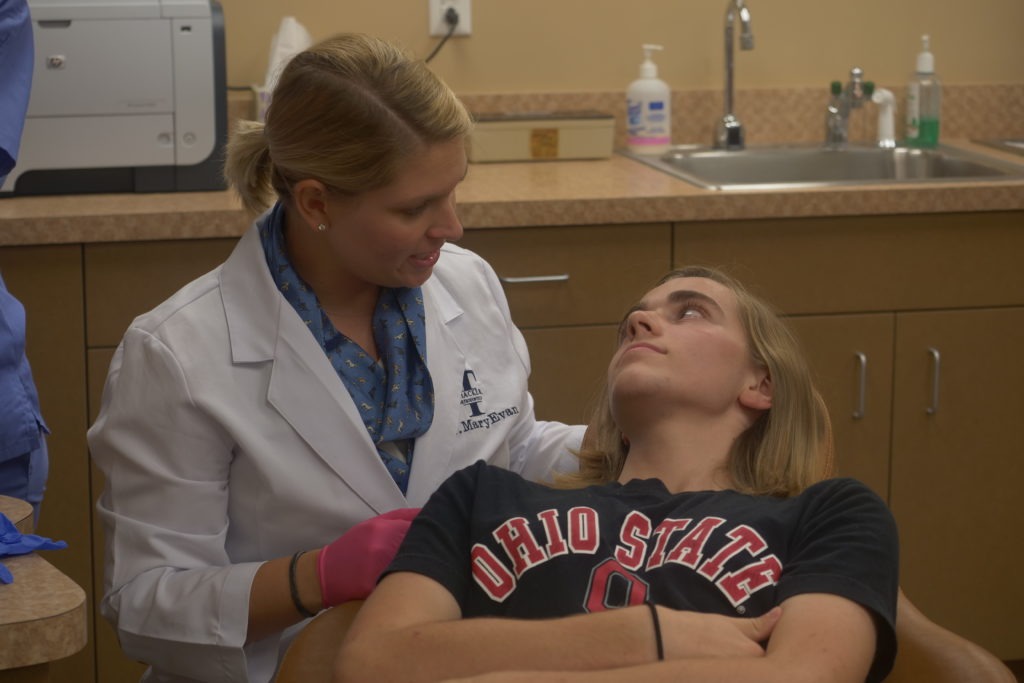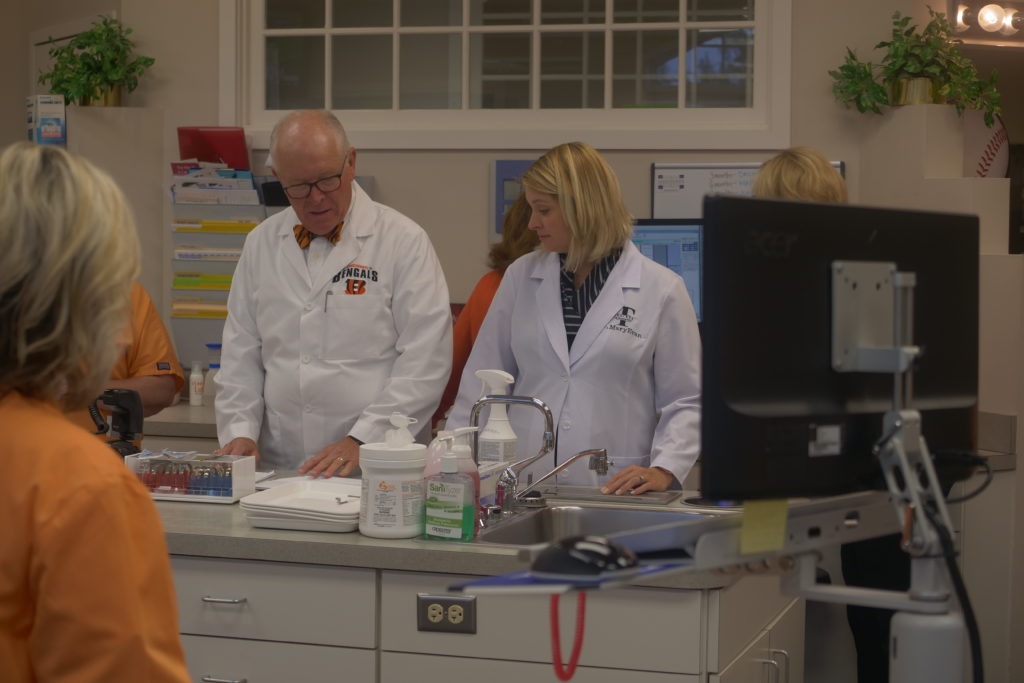Unless you happen to keep regular company with an orthodontist or two, chances are good that you probably haven’t heard the word malocclusion very often! This technical term describes what happens when mismatched or misaligned teeth and jaws cause a person to have what we refer to as a “bad bite.” When left untreated over a period of time, malocclusions can result in a number of orthodontic issues, including:
- crooked teeth
- crowded teeth
- protruding teeth
- gum problems
- temporomandibular joint dysfunction (TMD)
- headaches
- sleep disorders
- cosmetic changes
- speech problems
- difficulties with eating or chewing
There are several different types of malocclusions, all of which we see and correct regularly here at Thacker Orthodontics. While some of them are symptomless, others can be inconvenient or even painful. Keep reading to learn more about the most common malocclusions, the symptoms they can cause, and what our team can do to successfully treat them!
The three main classes of malocclusions
Class 1
This is the most common type of malocclusion. It is characterized by the upper teeth slightly overlapping the lower ones in what would be an otherwise normal bite.
Class 2
This malocclusion consists of an overbite, where the upper jaw and the upper teeth overlap the lower jaw and teeth in an abnormal manner.
Class 3
This malocclusion consists of an underbite occuring when the lower jaw and lower teeth overlap the upper jaw and the upper teeth.
The different types of malocclusions
Overcrowding
Overcrowding is a very common orthodontic condition, and is often due to a lack of space, resulting in teeth that are crooked and overlapping.
Spacing
Spacing issues can occur between two or more teeth. They are most commonly caused by prematurely missing teeth, small teeth, tongue thrusting, and extended thumb sucking. Too much or too little space can result in crowding, especially in children, where it can later impact the eruption of the permanent teeth.
Open bite
In an open bite, the front teeth don’t overlap the lower teeth. If it’s the upper and lower front teeth that don’t overlap, it can result in an opening that leads straight into the mouth. An open bite that affects the front teeth is known as an anterior open bite, but the problem can also occur on the sides of the mouth.
Overjet
This malocclusion causes the top teeth to extend past the bottom teeth horizontally. This kind of protrusion can interfere with chewing food and speaking properly.
Overbite
Although some overlap of the lower front teeth is normal, an increased overbite can cause your front teeth to bite down onto your gums, or your lower front teeth to bite into the roof of your mouth.
Underbite (or anterior crossbite)
When the lower front teeth are positioned much further forward than the upper front teeth, it results in an underbite, which is also known as an anterior crossbite.
Crossbite
This malocclusion occurs when your upper teeth bite inside your lower teeth. It can happen on one or both sides of your jaw, and affect the front or back teeth.
Diastema
Sometimes referred to as “gap teeth”, this refers to the space that exists between two adjacent teeth, most commonly the front two teeth.
Impacted tooth
Impacted teeth cannot erupt through the gum naturally. We may choose to extract it, or we may want to expose it so a brace can be fitted to the surface.
Missing tooth
Also known as “hypodontia,” this condition can occur as a result of trauma, or from something as simple as the improper development of the teeth.
The most common causes of malocclusions
Although most malocclusions are due to inherited conditions, some can also result from certain conditions or habits. If these conditions or habits are allowed to continue with no treatment plan, they can eventually lead to changes in the actual shape and structure of the jaw. One example of this would be teeth that have too much or too little room to erupt, resulting in the them drifting out of place over time. Some other common causes of malocclusions are:
- tooth loss
- prolonged use of a pacifier
- prolonged thumb or finger sucking
- cleft lip and palate
- injuries and trauma
- tumors in the mouth or jaw
- bottle feeding
- impacted tooth
- lack of proper oral care
- an airway that has been obstructed by enlarged adenoids or allergies
Common symptoms of malocclusions
As we’ve previously mentioned, symptoms associated with malocclusions can be nonexistent, mild, moderate, or severe. Some of the common symptoms patients tend to experience may include:
- misaligned teeth
- discomfort when biting or chewing food
- speech problems
- difficulty breathing through the mouth
- frequent biting of the tongue or cheeks
- changes in the overall structure of the face
Even symptomless malocclusions can be caught with proper dental care, so regular check-ups with an experienced dentist are important in more ways than one! Just as regular dental visits can help identify dental problems before they become more serious, early and regular orthodontic evaluations can pinpoint potential orthodontic issues before they develop into something more severe. This is exactly why The American Association of Orthodontists recommend every child have their first orthodontic evaluation by around the age of seven. Most dentists and orthodontists recommend dental check-ups for children beginning around their first birthday.
How Thacker Orthodontics can treat malocclusions
Malocclusions won’t always require corrective treatment, particularly if no symptoms are present. However, moderate to severe malocclusions in any class will often need a little help from orthodontics to ensure a beautiful, aligned smile that is fully functioning. This treatment may include anything from tooth removal to braces or clear aligners, with some of the more complex cases requiring retainers, oral splints, or possibly surgery. Braces, tooth extraction, and retainers or oral splints can be administered alone or simultaneously, depending on the specifics of the individual smile we’re treating!
The benefits to successfully treating a malocclusion don’t stop at a proper bite and more attractive smile. Teeth will often be easier to brush and floss, reducing the risk of cavities and tooth decay, and improving your oral health in general. It can also limit the strain placed on the teeth and jaw, reducing the risk of broken or chipped teeth. Many patients may even experience an easing or elimination of their TMD symptoms.
Caring for your oral health with Thacker Orthodontics
Whether you have a child who is ready for their first orthodontic examination, or you want to schedule one for yourself or your teen, our talented team would love to take a look and make sure everything is where it should be, doing what it should be doing! Dr. Jim and Dr. MaryEvan have many years of combined experience providing high-quality, individualized orthodontic care for patients of all ages in Cincinnati, Hillsboro, and the surrounding communities. Get in touch with us today to schedule a FREE consultation with us, and get ready to take the first step toward a beautiful, healthy smile!


